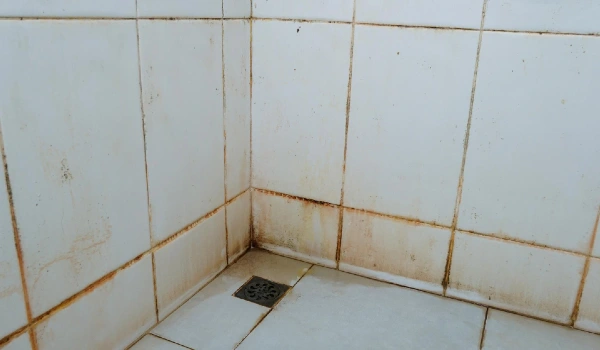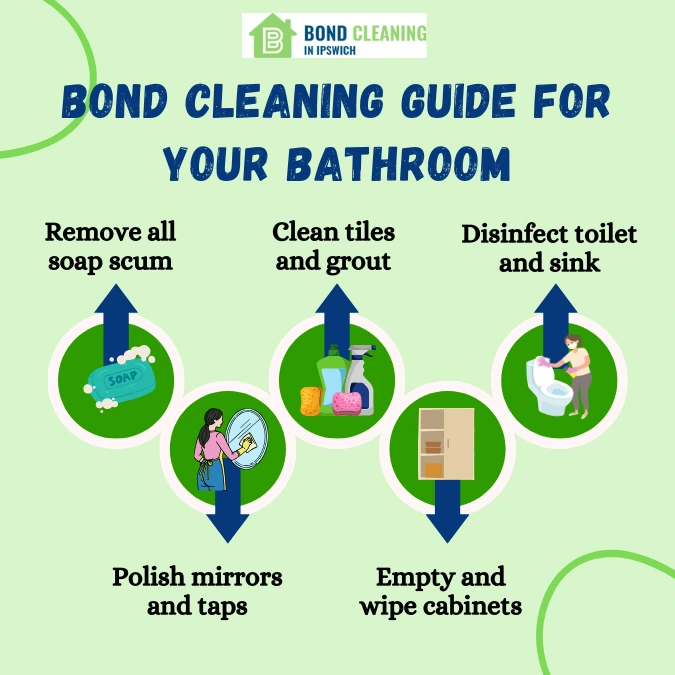Bathroom Bond Cleaning Guide: Tackling Mould, Grout & Glass
Bathrooms are the toughest areas to clean when preparing for the final rental inspection. It is a small space but one that holds some of the biggest cleaning challenges, from stubborn mould to discoloured grout and cloudy glass shower screens. Many tenants find that no matter how well they have maintained the bathroom, it often becomes the dealbreaker when it comes to getting the bond back.
That’s where professional bathroom bond cleaning comes in. This bathroom cleaning guide will help you understand how to tackle mould, grout and glass successfully. If you’re getting ready for a final inspection or hiring professionals for cheap bond cleaning Ipswich, tenants can drastically improve the quality of their bathrooms. They focus on key issue areas such as mould, grout and glass. This way they are also meeting the high standards anticipated by landlords and property managers.
1. Why Bathroom Matters in a Bond Cleaning Checklist
Bathrooms are one of the most heavily scrutinised spaces during a bond inspection. Real estate agents often look closely at sinks, tiles, and shower screens because these areas easily show dirt, soap scum, and signs of neglect. Even a small patch of mould or a streak on the glass can be flagged as a reason for deduction from your bond.
A pristine bathroom not only just reflects your well on your tenancy, but also guarantees that you leave the house in a hygienic and presentable condition for the future resident. This is why it is critical to invest the necessary time and effort or to engage professionals, to restore the bathroom to its original appearance.
2. Dealing with Mould Effectively

Mould is one of the biggest culprits in bathrooms, thanks to constant exposure to moisture and poor ventilation. It typically forms in tile grout, ceilings, and corners where dampness lingers. Removing it is not just about appearance; it is also a matter of hygiene, as mould can trigger allergies and respiratory issues.
To remove mould, use a mix of mould removal products or natural remedies such as vinegar and baking soda. Scrubbing thoroughly and letting the solution sit for a bit usually works best. For stubborn mould on ceilings or silicone sealant; professional cleaning services such as bond cleaning Ipswich may be required. Addressing these issues appropriately guarantees that, the bathroom passes inspection with no red flags.
3. Restoring Grout to Its Original Look
Grout lines are another hotspot for problems. Over time, they trap dirt, soap residue, and mould, making the entire bathroom looks aged and unclean. Even if tiles are sparkling, dirty grout can ruin the impression.
The best way to clean grout is with a stiff brush and a strong cleaning agent designed for grout restoration. Some tenants even use a toothbrush for precise cleaning. For severe discolouration, grout whitening pens can give a fresh finish. Clean grout lines not only enhance the look of tiles but also make the bathroom appear brighter and well maintained.
4. Getting Shower Glass Sparkling
Shower screens and mirrors are magnets for water stains, soap scum, and streaks. Cloudy glass is one of the first things an inspector will notice, and it often requires more than just a quick wipe down.
A vinegar water solution or specialised glass cleaner usually does the trick. Using a squeegee after cleaning ensures streak free glass. For persistent mineral deposits; a baking soda and water mixture applied with moderate scrubbing can be extremely effective. The goal is, to get the glass absolutely clear with no hazy areas or residue left behind.
5. Don’t Forget Fixtures and Fittings
While mould, grout, and glass receive the most of the attention, fixtures such as taps, showerheads, and knobs also have a significant impact on the overall cleanliness of the bathroom. These places usually collect water marks, fingerprints, and limescale, which can be ignored.
Polishing these fittings with the right cleaning agent restores their shine and gives the bathroom a freshly maintained look. Make sure to examine behind taps and around drains as agents commonly inspect these less visible places. A gleaming set of fixtures completes the bathroom’s pristine appearance and provides no space for complaints.
6. When to Consider Professional Bond Cleaning
Even though DIY techniques can work, not all tenants have the time, resources, or know how to clean to inspection standards. For this reason it may be wise to work with bond cleaning Ipswich specialists. Professionals are prepared with industrial grade chemicals to tackle obstinate problems like mineral deposits and deep seated mould and they are aware of the standards that landlords require.
Outsourcing the job gives peace of mind and increases your chances of a bond refund. Many cleaning businesses also provide guarantees which indicate they will return to reclean any places, identified by the property manager, at no additional expense.
Infographic: Bond Cleaning guide for your bathroom

Wrapping Up
Bathroom bond cleaning may be daunting, but dividing it down into problem areas makes the job more doable. Whether you roll up your sleeves or engage specialists; the key is to pay attention to detail. A gleaming bathroom not only passes the landlord’s inspection, but it also assures you receive your bond. A clean bathroom is more than simply a necessary; it is the key to a stress free transfer and a secure return.

